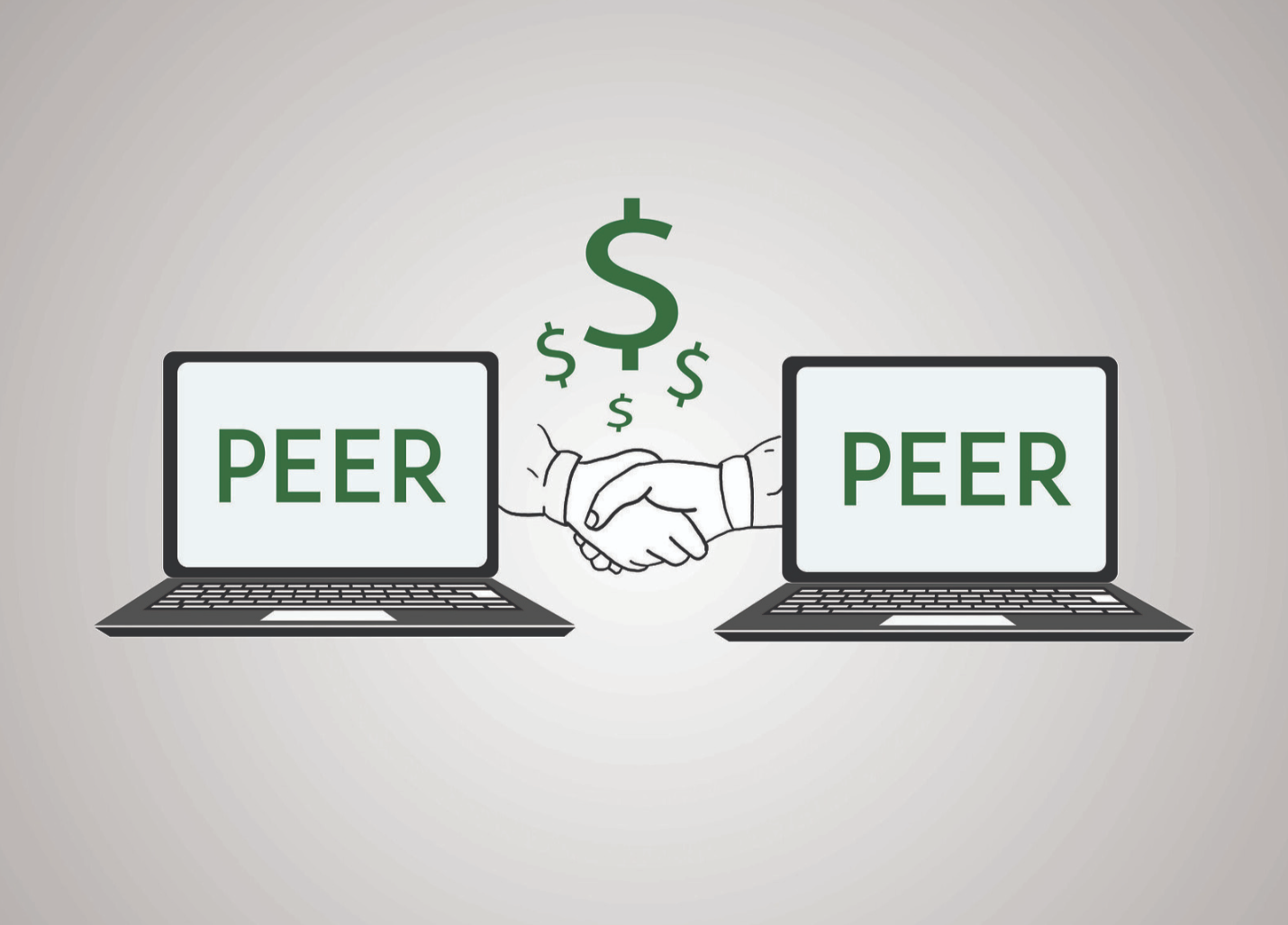
Peer-to-peer (P2P) lending platforms are online services that allow borrowers to obtain loans directly from investors, cutting out the traditional banking middleman.
This can be a more attractive option for borrowers who may not qualify for a loan from a bank, and it can offer better interest rates for investors given those qualifying for P2P loans tend to be riskier.
There are a number of different P2P lending platforms available, each with its own strengths and weaknesses.
To choose the best platform for your needs, it’s important to compare a few different options and see which one offers the best terms.
Here are a few of the best peer to peer lending platforms currently available:
Table of Contents
Best Peer to Peer (P2P) Lending Platforms
#1 LendingClub
LendingClub is one of the largest and most well-established P2P lending platforms. It offers loans to both individuals and businesses, with loan amounts ranging from $1,000 to $40,000.
LendingClub has an extensive screening process for borrowers, which includes a credit check, employment verification, and bank account review. This makes it one of the more selective P2P lending platforms, which can be good for investors looking for lower-risk loans.
However, the platform does have some drawbacks. First, LendingClub charges origination fees of 2-6% based on credit rating (and after a loan is received), which can add up if you’re borrowing any decent amount of money.
Second, the platform is only available to US citizens and permanent residents (who must reside in the US).
LendingClub is good as a way to get your foot in the door as an individual investor in P2P lending.
#2 Prosper
Prosper is another large P2P lending platform that offers loans to both individuals and businesses. Loan amounts on Prosper range from $2,000 to $40,000.
Prosper has a similar screening process to LendingClub, with a credit check, employment verification, and bank account review. However, Prosper does not charge origination fees, which can make it a more attractive option for borrowers.
Prosper is also available to borrowers in all 50 US states, making it more accessible than some of the other P2P lending platforms.
However, Prosper does have some drawbacks. First, the platform has a higher minimum loan amount than some of the other options on this list. Second, Prosper nvestors pay an annual loan servicing fee, currently set at 1% per year for each payment received from borrowers toward each Note the investor holds. This can eat into your returns.
Prosper is arguably the best P2P platform for understanding the risk with each loan that you invest in.
#3 LendingTree
LendingTree is a P2P lending platform that offers loans to both individuals and businesses. Loan amounts on LendingTree range from $1,000 to $50,000.
LendingTree has a streamlined application process that makes it easy for borrowers to get started. The platform also offers a wide range of loan terms, which can be helpful for borrowers who want more flexibility.
However, LendingTree does have some drawbacks. First, the platform is only available to US citizens and permanent residents. Second, LendingTree charges origination fees of up to 8%, which can add up if you’re borrowing a large amount of money.
#4 Upstart
Upstart is a P2P lending platform that offers loans to both individuals and businesses. Loan amounts on Upstart range from $1,000 to $50,000.
Upstart has a unique underwriting process that considers factors like education and employment history in addition to credit score. This can make it easier for borrowers with limited credit histories to get approved for a loan.
However, Upstart does have some drawbacks. First, the platform is only available to US citizens and permanent residents. Second, Upstart charges origination fees of 0-10% of the target amount.
#5 Funding Circle
Funding Circle is a P2P lending platform that offers loans to businesses. Loan amounts on Funding Circle range from $25,000 to $500,000.
Funding Circle has a quality screening process for borrowers, which includes a detailed business plan review. This makes it one of the more selective P2P lending platforms, which can be good for investors.
However, Funding Circle does have some drawbacks. First, the platform is only available to businesses in the US, UK, and Germany. Second, Funding Circle charges origination fees of 3.49% to 6.99% of the approved loan amount.
#6 Peerform
Peerform is a peer-to-peer lending company based in New York City, which matches prime and near-prime qualified borrowers in the US to accredited high net worth and institutional investors on its online platform. Loan amounts on Peerform range from $4,000 to $25,000 for individuals (i.e., personal loans).
Peerform has a lower minimum loan amount than some of the other P2P lending platforms on this list. The platform also offers a wide range of repayment terms, which can be helpful for borrowers who want more flexibility.
However, Peerform does have some drawbacks. First, the platform is only available to US citizens and permanent residents. Second, Peerform charges origination fees of 1-5%.
Minimum credit score needed is 600. APRs range from 5% to 30%.
Peerform offers some of the most attractive returns in the P2P industry for investors.
#7 Kiva
Kiva is a 501 non-profit organization headquartered in San Francisco, California, it is the world’s first online lending platform connecting online lenders to entrepreneurs across the globe. It is considered a microfinance lender.
At Kiva you can qualify for a loan between $1,000-$15,000, with no interest. It’s available for startups and established businesses.
And the money can go towards any business purpose: working capital, equipment, inventory, marketing, or project-based investments.
Kiva has a unique mission-driven focus, which sets it apart from other P2P lending platforms. The platform also offers a wide range of repayment terms, which can be helpful for borrowers who want more flexibility.
However, Kiva does have some drawbacks. First, the platform is only available to US citizens and permanent residents.
Kiva doesn’t have an origination fee, though it depends on the loan.
Kiva is a great option for those who want to help change the lives of entrepreneurs.
#8 Payoff
Payoff is owned by Happy Money. The Payoff Loan is a personal loan between $5,000 and $40,000 designed to help you eliminate or lower your credit card balances. The average APR is 15.49% (fixed), meaning your monthly payment will never change. Loan terms are two to five years, and there is no origination fee.
Payoff is a good option for borrowers who want to consolidate their credit card debt. However, the platform does have some drawbacks. First, Payoff is only available to US citizens and permanent residents. Second, Payoff charges origination fees of 1-5%, but can add up to more than 10%.
Payoff enables borrowers to improve their credit scores.

How Do Peer To Peer Lending Sites For Investors Work?
Explained | What is P2P Lending & How It Works
Peer-to-peer lending platforms are online marketplaces that connect investors with borrowers. Investors can choose to fund loans, or they can choose to invest in a loan pool.
Loan pools are managed by the peer-to-peer lending platform, and they offer investors a way to diversify their investments and make passive income.
When you invest in a loan pool, your money is spread out across multiple loans, which helps to mitigate risk.
Many peer-to-peer lending platforms require investors to be accredited, which means they have a net worth of $1 million or more, or an annual income of $200,000 or more.
Peer-to-Peer Lending (AKA P2P Loans or Crowdlending) Explained in One Minute
What Are The Benefits Of Peer To Peer Lending?
There are a number of benefits associated with peer to peer lending.
- Peer-to-peer lending platforms offer borrowers a way to get access to capital that they might not be able to obtain from a traditional lender.
- They offer investors a way to earn higher returns than they would on traditional investments.
- Peer-to-peer lending platforms offer a degree of flexibility that is not typically available with other types of loans.
- They can provide borrowers with access to funds in a shorter amount of time than it would take to obtain a loan from a bank.
What Are The Risks Of Peer To Peer Lending?
There are a number of risks associated with peer-to-peer lending.
First, there is the risk that the borrower will default on the loan. If this happens, the investor will not receive any interest payments, and they may even lose some of their principal investment.
Second, there is the risk that the peer-to-peer lending platform will become insolvent. If this happens, investors may not be able to access their funds.
Third, peer-to-peer lending platforms are not as heavily regulated by the government, which means that there is no guarantee that your investment will be safe.
Fourth, peer-to-peer lending platforms typically require a high degree of commitment from investors. If you’re not prepared to commit for the long term, you could lose money if the platform goes out of business or if borrowers default on their loans.
6 P2P Lending Mistakes and How to Avoid Them
What To Look For When Choosing A Peer To Peer Lending Platform
If you’re thinking about investing in peer-to-peer lending, there are a few things you should look for in a peer-to-peer lending platform.
First, you should make sure that the platform is available to investors in your country.
Second, you should make sure that the platform has a good reputation. You can check out reviews of peer-to-peer lending platforms online to see what other investors have to say.
Third, you should make sure that the platform offers a good interest rate if you’re an investor. The best peer-to-peer lending platforms offer interest rates of 8% or more.
Fourth, you should make sure that the platform has a low minimum investment amount. This will allow you to diversify your investments and mitigate risk.
Best Peer to Peer (P2P) Lending Platforms – Bottom line
There are a number of different peer-to-peer lending platforms available, each with its own set of pros and cons. Before choosing a platform, it’s important to do your research and make sure that the platform is a good fit for your investment goals.
The best peer-to-peer lending platforms offer a variety of benefits, including high interest rates, low minimum investment amounts, and the ability to diversify your investments.
When choosing a peer-to-peer lending platform, be sure to check out reviews online and make sure that the platform is available in your country.
Investing in peer-to-peer lending can be a great way to earn high returns on your investment. However, it’s important to be aware of the risks before you commit any money.


![Backwards 3: How to Type "Ɛ" [EASY]](https://softwareblade.com/wp-content/uploads/2022/02/Screen-Shot-2022-02-19-at-9.03.25-PM-150x150.png)